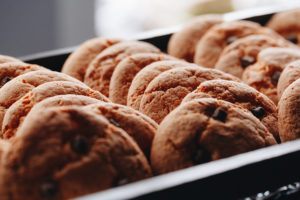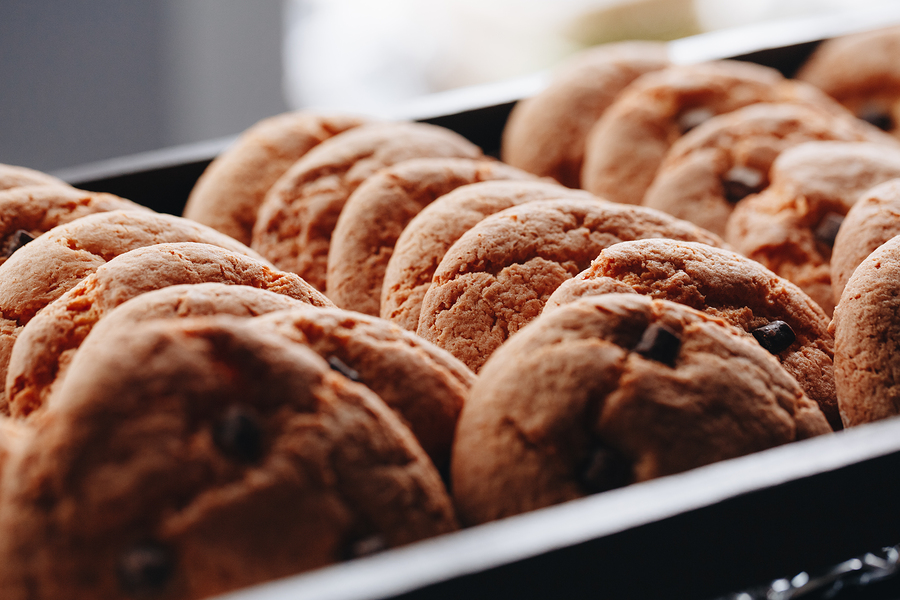 As consumer trends evolve, bakers often face the challenge of modifying their recipes to meet the demand without losing the taste, texture, and functional advantages of the original ingredients. And clean label is, perhaps, driving more formulation changes than any trend before it.
As consumer trends evolve, bakers often face the challenge of modifying their recipes to meet the demand without losing the taste, texture, and functional advantages of the original ingredients. And clean label is, perhaps, driving more formulation changes than any trend before it.
The definition of “clean label” may vary among consumers. But when they pick up packaged goods, they’re generally looking for familiar ingredients they can pronounce. Often, they use that criteria to determine whether the product is “all-natural” — a food that’s free from chemical, artificial, and highly processed ingredients. Bonus points if those ingredients benefit personal and environmental health.
With that in mind, here are some clean label alternatives to common bakery ingredients.
Fats and oils
Partially hydrogenated oils, or artificial trans fats, are on their way out, but that doesn’t mean all the alternatives are favorable.
While it may be a recognizable ingredient, “fat” is not exactly an appealing word to consumers. Fats are associated with high calories and heart-related health risks. And even though there are a lot of clean label substitutes out there, not all of them are suitable for bakery applications. So the challenge for bakers is to find fats and oils that function well in their recipes while reducing overall fat content.
High-oleic oils from soy, canola, or sunflower are taking on the clean label challenge, and, in some cases, eliminating the need for antioxidants. (Synthetic antioxidants are often used to improve shelf life.) There are also options in sustainable palm-based oils.
Here are a few products that offer clean label solutions, healthier fat levels, and functional benefits for bakers:
- AAK’s Essence line
- Stratas Foods’ Superb Select 1020 shortening
- Bunge’s PhytoBake shortening
- Cargill’s PalmAgility
Flavors and colors
Processed, synthetic flavors and colors have long provided popular foods with a strong, familiar taste and an eye-catching look. However, the clean label movement calls for these additives to come from natural sources. Bakers are tasked with creating delicious flavors and attractive appearances without the benefits of artificial ingredients.
Natural flavoring has been a tricky area for the bakery industry, as natural flavors often contain many of the same chemicals used to process artificial flavors. In order for food processors to avoid listing those chemical additives on the label, those chemicals must be Generally Recognized as Safe (GRAS). Natural colors, on the other hand, must come from natural sources listed by the FDA, such as fruits, vegetables, and spices.
Even though they help clean up the label, natural flavors and colors have their share of downsides — they often come with a reduced shelf life, higher cost, sensitivity to heat and light, diminished flavors, and less vibrant colors compared to their artificial equivalents. The good news is that’s changing. Companies like Synergy Flavors, Chr. Hansen, and DDW, the Color House are developing clean label solutions for bakery applications.
Flours and sweeteners
Going clean label with flours and sugars requires eliminating ingredients like bleached flours, high fructose corn syrup, and sugar alcohols (e.g. sorbitol). Fortunately, there are a wealth of alternatives in these categories, many of which also add health benefits to baked goods.
To improve its bakery qualities, white flour is often bleached and enriched with synthetic vitamins and minerals. Some of the clean label replacements for white flours are flours made from whole, ancient, and/or sprouted grains. There are also growing options for flours formulated with seeds, nuts, and plant-based ingredients that can add a variety of tastes and textures to bakery products. Some flours boost protein and add fiber, too.
And there is no shortage of sweeteners for bakers seeking to replace corn syrup and sugar alcohols. Even though ingredients like cane sugar, honey, and maple syrup are natural, recognizable ingredients, consumers who are trying to reduce their sugar intake may not consider these to be desirable. As a substitute, bakers can use sugars made from fruits and starches, many of which contain low or no calories.
Mold inhibitors, preservatives, and dough conditioners
Many of the chemicals and artificial ingredients in baking exist to protect and enhance the quality of the product. Mold inhibitors and preservatives like propionates, sorbates, and benzoates are effective at keeping baked goods fresh and extending shelf life, but they definitely don’t qualify as clean label ingredients. Natural ingredients that can act as mold inhibitors are cultured whey or wheat flours, vinegar, raisin or prune juice, cinnamon or cloves, and natamycin.
Dough conditioners, which help maintain product consistency and quality in large-scale production, are another area where clean label alternatives are emerging. These include various enzymes, ascorbic acids, vital wheat gluten, and deactivated yeast. L-cysteine, derived from protein or plant sources, is another clean label conditioner bakers can use as a reducing agent.
Despite these advancements, there are still issues to solve. To make up for lost functionality when switching to clean label ingredients, bakers may have to seek out different processing methods, including changes in temperature, baking times, and packaging.
There are also some ingredients — xanthan gum, for example — that consumers may not recognize as natural. That’s why swapping out artificial ingredients often goes hand-in-hand with customer education regarding the natural characteristics, sources, and functions of any new ingredients.

